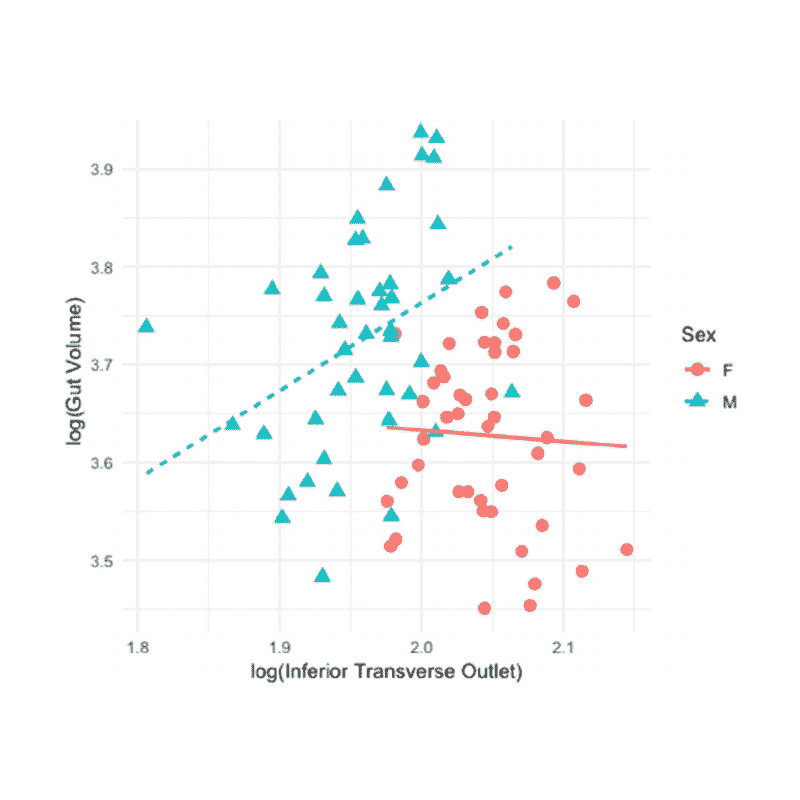Research highlight: Sexual dimorphism in the relationship between the gut and pelvis
We test the notion that pelvis dimensions can yield accurate estimates of gut size in fossil hominins by looking at today's people.
Citation: Uy, Jeanelle, John Hawks and Caroline VanSickle. Sexual dimorphism of the relationship between the gut and pelvis in humans. American Journal of Physical Anthropology. e24084. https://doi.org/10.1002/ajpa.24084
Many researchers in human evolution have been interested in the idea that early hominins may have had large guts for digesting poor-quality diets. They have thought that the large pelvis size of hominins like Australopithecus afarensis might reflect gut size, because the pelvis supports the gut in bipeds like humans.
But almost nobody had looked to see whether pelvis size gives any predictive value about gut size in humans or other primates. Jeanelle's research shows that in men the pelvis-gut size relation is entirely explained by body size, with no significant relationship in women. In fact men and women vary in opposite directions, which puts the idea of estimating ancient hominin gut sizes in a different light.
This is an innovative piece of work built on direct measurements of gut sizes from CT scans of living research participants. Previous studies have relied on a handful of dissections of primates across several species, and have not been able to look at the variation within species. When we are trying to understand the anatomy of fossil hominins, the variation within humans is much more relevant than the sizes of small monkeys.




